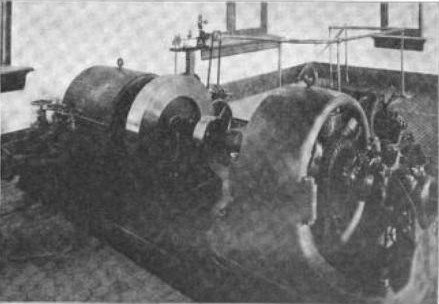According to the U.S. Department of Energy (DOE) there's over 60 gigawatts of renewable power that could be generated in the United States that's going unused. That power would come from new hydro installations and expansions on U.S. rivers. However, the U.S. Energy Information Administration (EIA) only expects 2 gigawatts of that power to be tapped by 2040. Why?
Power industry trade-offs
Generating electric power is all about trade-offs. Typically, that has meant utilities using the fuel that will create the most power for the least cost. Increasingly, that trade-off includes the impact of power generation on the environment. That's why utilities are moving away from coal and toward natural gas and renewables.
Southern Company (SO 0.84%) is a prime example. In 2000, coal represented two thirds of the company's fleet. By 2020, however, coal will fall to under 33%. Natural gas will be the offset, growing from under 15% to about 50%. This shift allows the utility to choose the cheapest power.
In 2020, either coal or gas could provide half of the power Southern Company expects to produce. For comparison, renewable fuels, which in Southern Company's case primarily means hydropower, will remain at roughly 8% in both periods.
Forget about hydro for just one second; why isn't Southern Company building more nuclear power, a source that doesn't emit CO2? It is, but that project is over budget, and opening day has been pushed back. Cost and construction issues help explain why nuclear, like hydro, will remain a bit player at roughly 10% of Southern Company's generation in both periods.

Source: Wikimedia Commons.
Connections matter, too
Texas provides another example of the problems hydro faces. The state's supply of solar power doubled between 2006 and 2009 according to the EIA. But the state lacked the infrastructure to get the power to where it was needed, and basically told the wind farms to stop their turbines. It took three years and 3,500 miles of transmission lines to get things worked out.
Attaching new power sources to the grid is a huge opportunity for utilities. Berkshire Hathaway (BRK.B -0.76%) and American Electric Power (AEP 0.55%) are teamed up 50/50 in Electric Transmission Texas. This joint venture essentially builds and owns transmission assets. Over the next decade, they expect to spend about a billion dollars on expansion. And clearly, Texas could use more power lines.
Bershire Hathaway and American Electric Power's big opportunity shows that building new green power assets is one thing, but it takes more than that to make them useful. And when it comes to renewable power, you have to go where the power is. For hydropower, that means rivers and streams.
Now I understand the problem!
According to the EIA, the vast divide between the DOE's 60 gigawatt number and the EIA's 2 gigawatt estimate "represents the significant gap between technical potential on the one hand and economic and operational potential on the other hand." The EIA concludes that "because hydropower is a mature technology, most of the technically and economically superior sites have already been developed."

Source: Western Electrician, via Wikimedia Commons.
So, Southern Company is comparing the construction of relatively cheap to build and run natural gas plants, which are favored by the industry, regulators, and environmentalists right now, against finding out-of-the-way rivers and streams to tap (including the construction of the power lines to get that power back to civilization). There's no competition there.
And don't forget that building a hydro facility will have a material impact on the river on which it's built -- something environmentalists abhor. Even wind farms like the ones American Electric Power and Berkshire Hathaway are attaching to the grid are facing environmental pushback.
The potential offered by hydropower makes good headlines, but it isn't going to be a major contributor to the power industry. The cost-benefit analysis just doesn't play out right now. Wind and solar are bigger green opportunities. But keep an eye on companies like American Electric Power and Berkshire Hathaway, which are looking to cash in by connecting new renewable sources to the grid.




